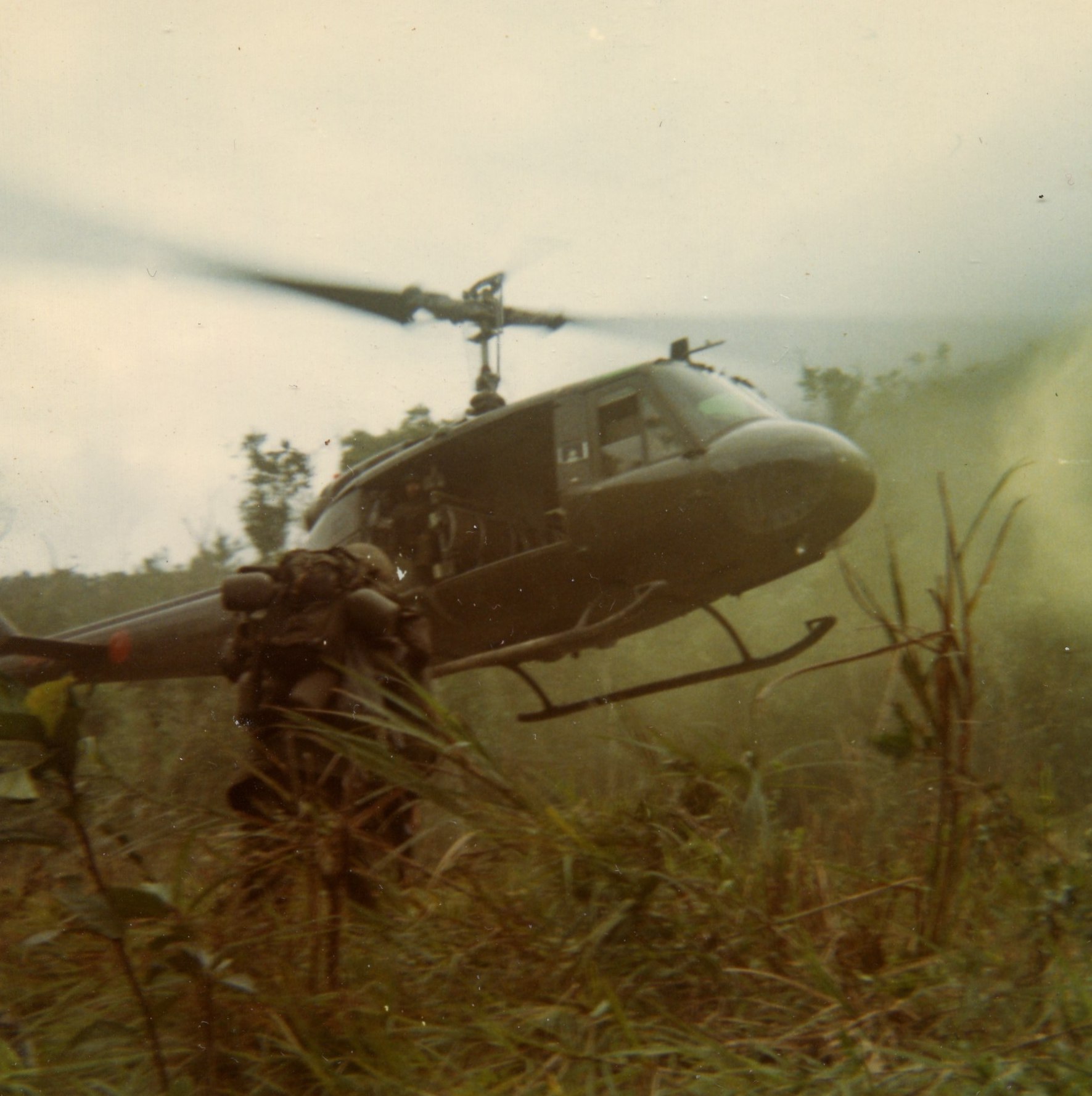
 A Minnesota PBS Initiative
A Minnesota PBS Initiative
Many veterans of WWII and Korea have trouble understanding why Vietnam experience was stressful, even given the fact that many infantry units spent much more time in actual contact than their uncles and fathers did. An additional source of stress was the air assault tactics made possible by the ubiquitous helicopters.
An airmobile insertion is a dangerous undertaking like any attack because of the uncertainty about who and what will be there to greet us.
Air assault tactics are characterized by the almost total absence of conventional “front lines” or “rear areas” or “supply lines.” Every airmobile operation meant leaving the relative security of other units and support bases and being intentionally inserted into situations where they were surrounded by enemy troops with the advantages of superior numbers, camouflaged fighting positions and familiar terrain.
An airmobile insertion is a dangerous undertaking like any attack because of the uncertainty about who and what will be there to greet us. Extensive reconnaissance, artillery and gunship prep and availability of support help mitigate the sources of concert.

But for many of us the air assault cannot hold a candle to a helicopter extraction when it comes to danger and stress. Here’s why:
No matter how experienced and disciplined our team is, the Pickup Zone (PZ) becomes an obvious and highly visible target, towards which we move with a mix of relief and apprehension. This necessary assembly spot places us and our transport our on the same small bullseye in the jungle. Our mission has lasted a few days or weeks, and the enemy knows we’re here. We are tired and filthy dirty, projecting a foul-smelling combination of sweat, jungle mud and gunpowder.
Each moment closer to the extraction also exposes us to greater vulnerability as the unmistakable sound of turbines and the slapping of the rotors on the dense jungle air proclaims our location and intent.
There are so many things that can go wrong – mechanical problems with the increasingly complex aircraft, a luck shot by a distant sniper shot, a bit of debris ingested by the air intake; any or all of these can mean disaster. We all go through the ritualistic processes of extraction, checking on one another to ensure that nobody gets left behind… the nightmare that each squad leader and platoon sergeant fears above all.
There are so many things that can go wrong – mechanical problems with the increasingly complex aircraft, a luck shot by a distant sniper shot, a bit of debris ingested by the air intake; any or all of these can mean disaster.
The danger grows with each moment as one Huey after another drops suddenly onto the jungle floor, pauses for an instant for its load of passengers to scramble aboard.
It is not until the last load for the last bird is safely aboard that we exhale our pent-up tension and grin at the door gunners.
It doesn’t matter what our destination is – firebase, base camp or just another LZ and another mission – we are for the moment safe, and safe is good.
Submitted From: South St. Paul, MN

Primary Location During Vietnam: A Shau Valley, Vietnam 
Story Subject: Military Service
Military Branch: U.S. Army
Dates of Service: 1969 - 1971
Veteran Organization: 506th Airborne Infantry Regiment Assn
Unit: A Co, 1-506 Infantry, 101 Airborne Division
Specialty: Infantry Platoon Sergeant 11B40
Story Themes: 101st Airborne Division, 1069, 1970, 1971, 506th Airborne Infantry Regiment, A Shau Valley, Army, I Corps, John Lally, Read, South Saint Paul, South St. Paul